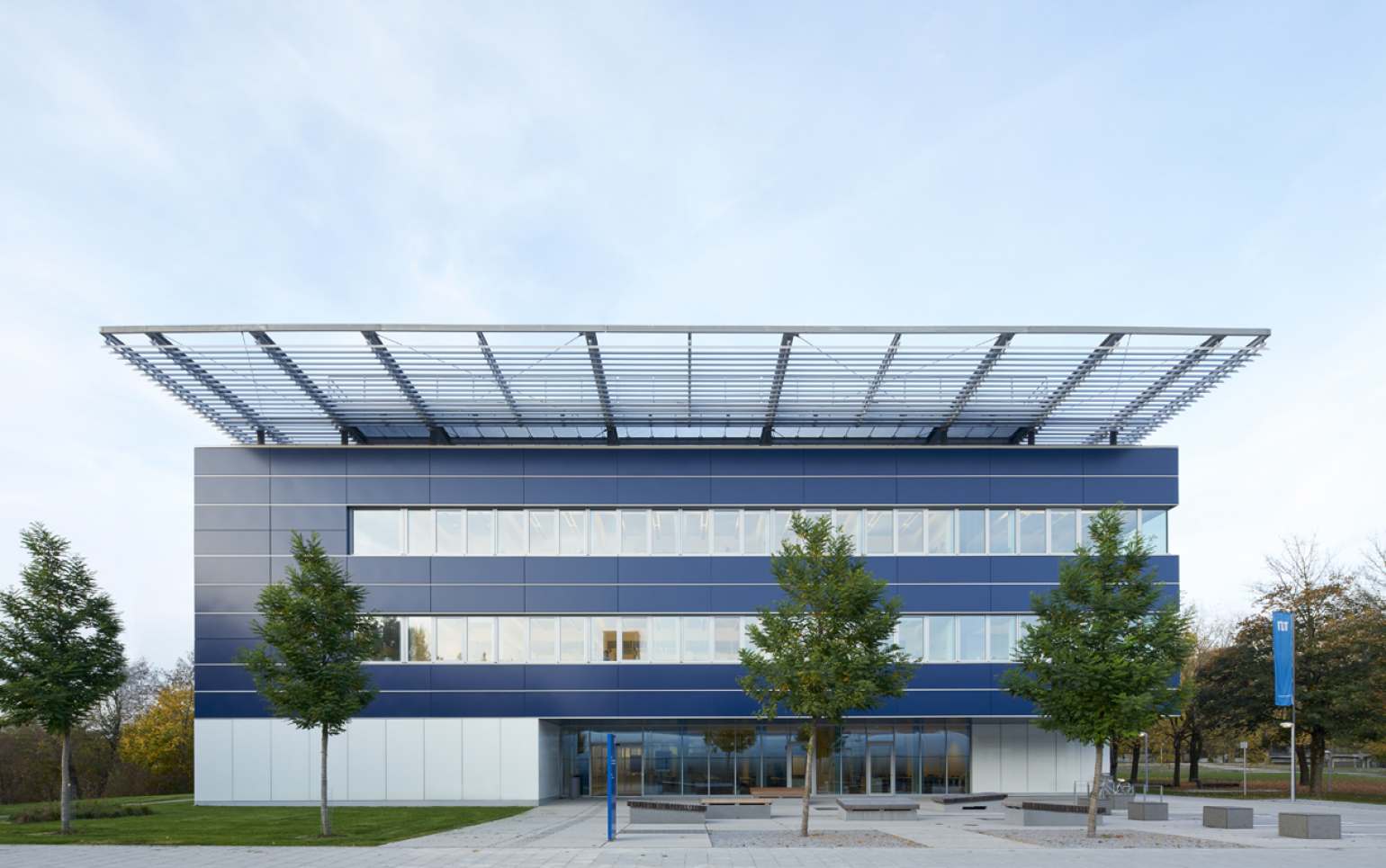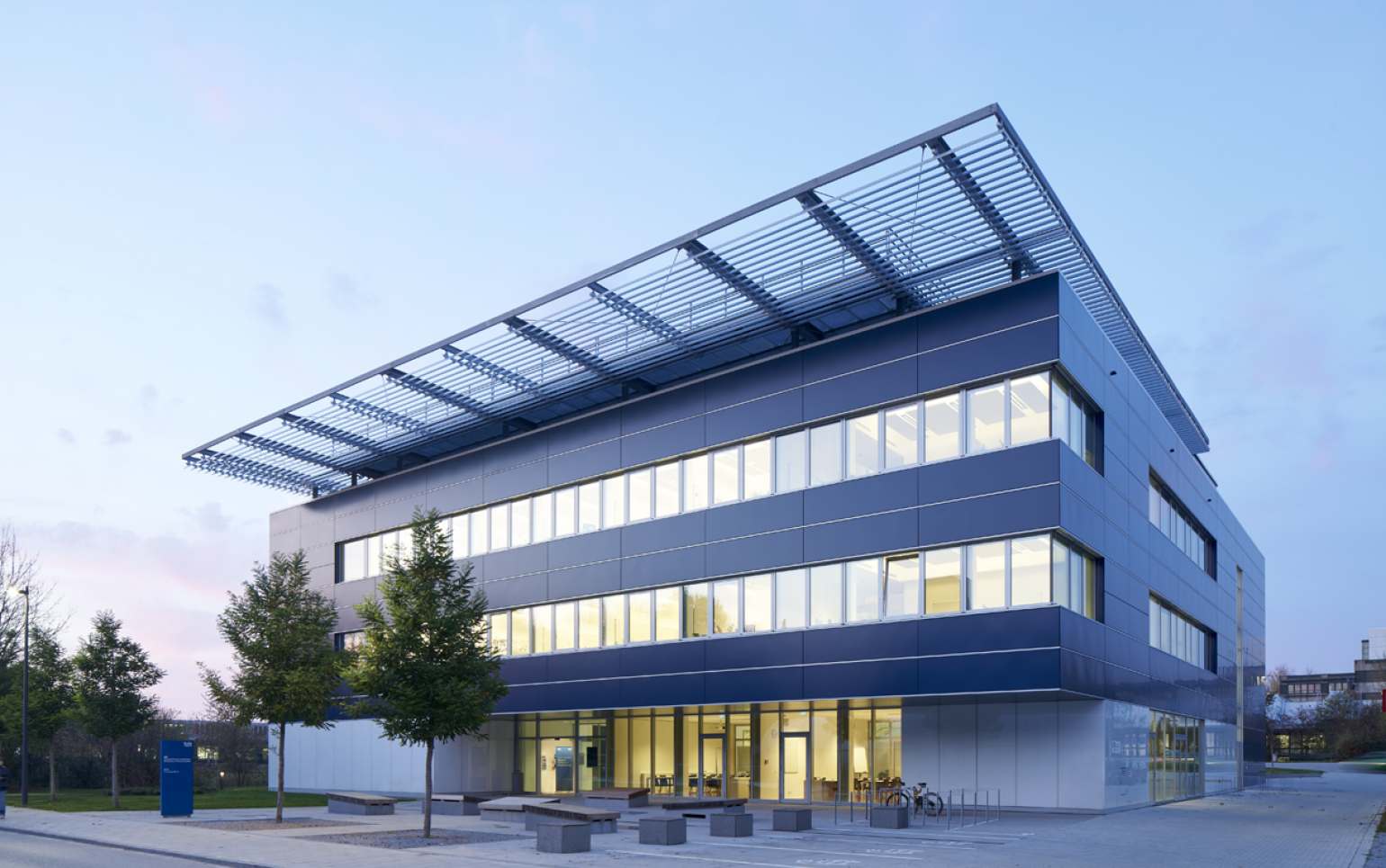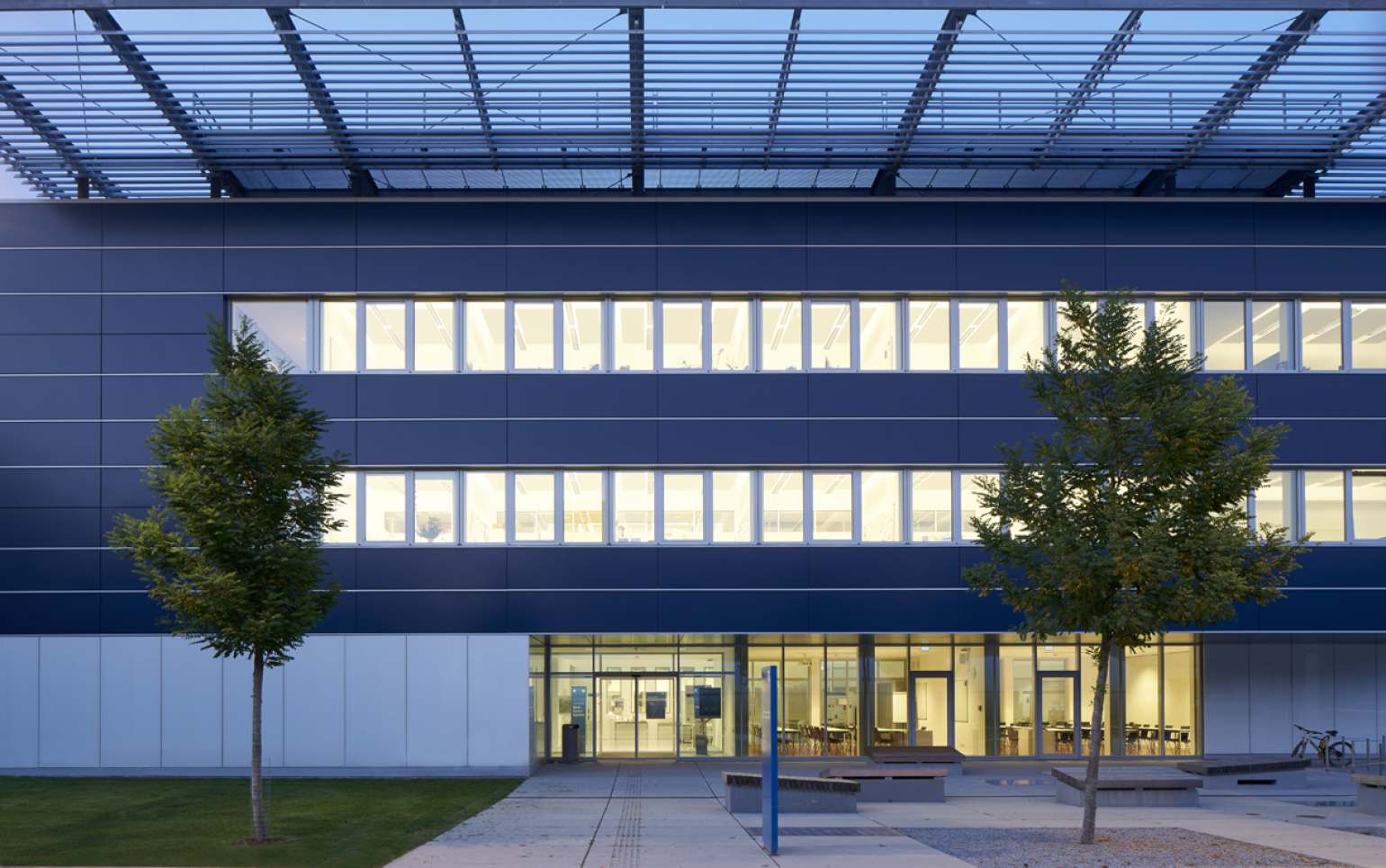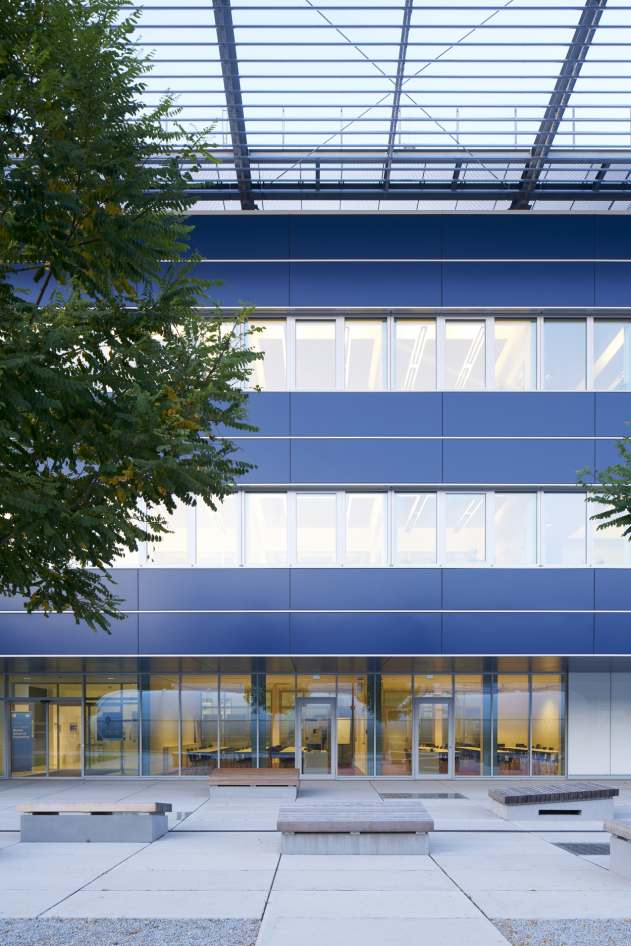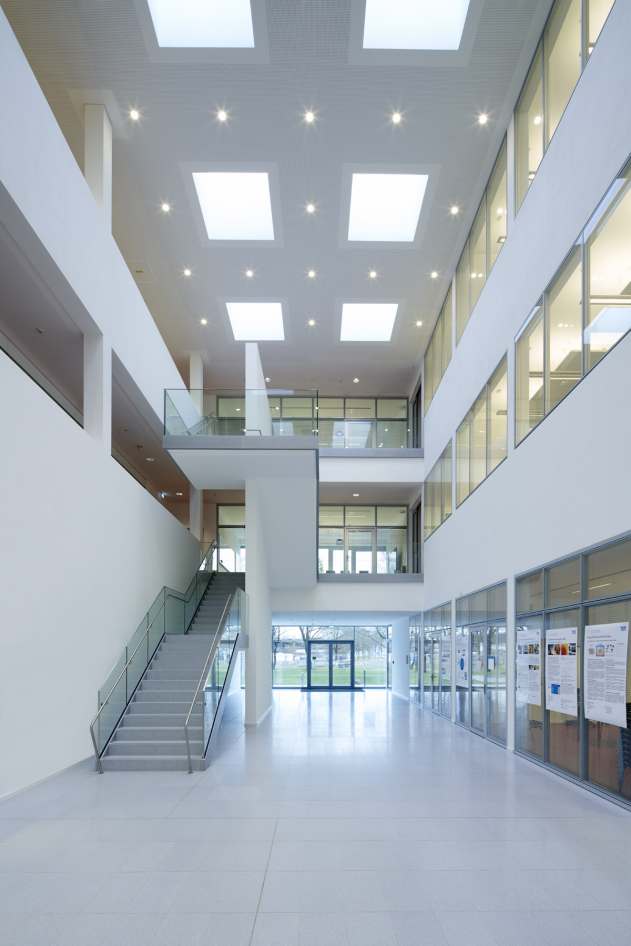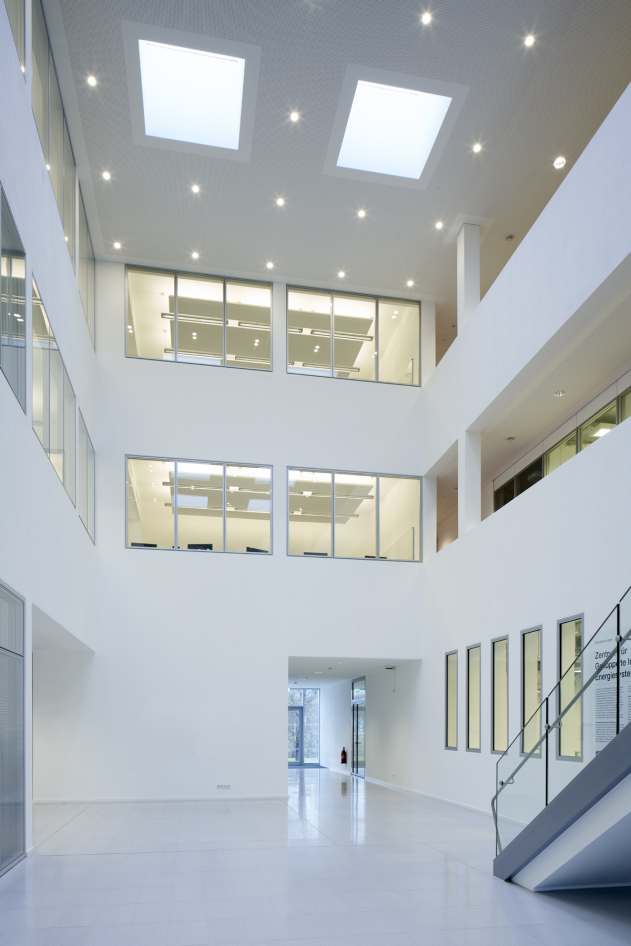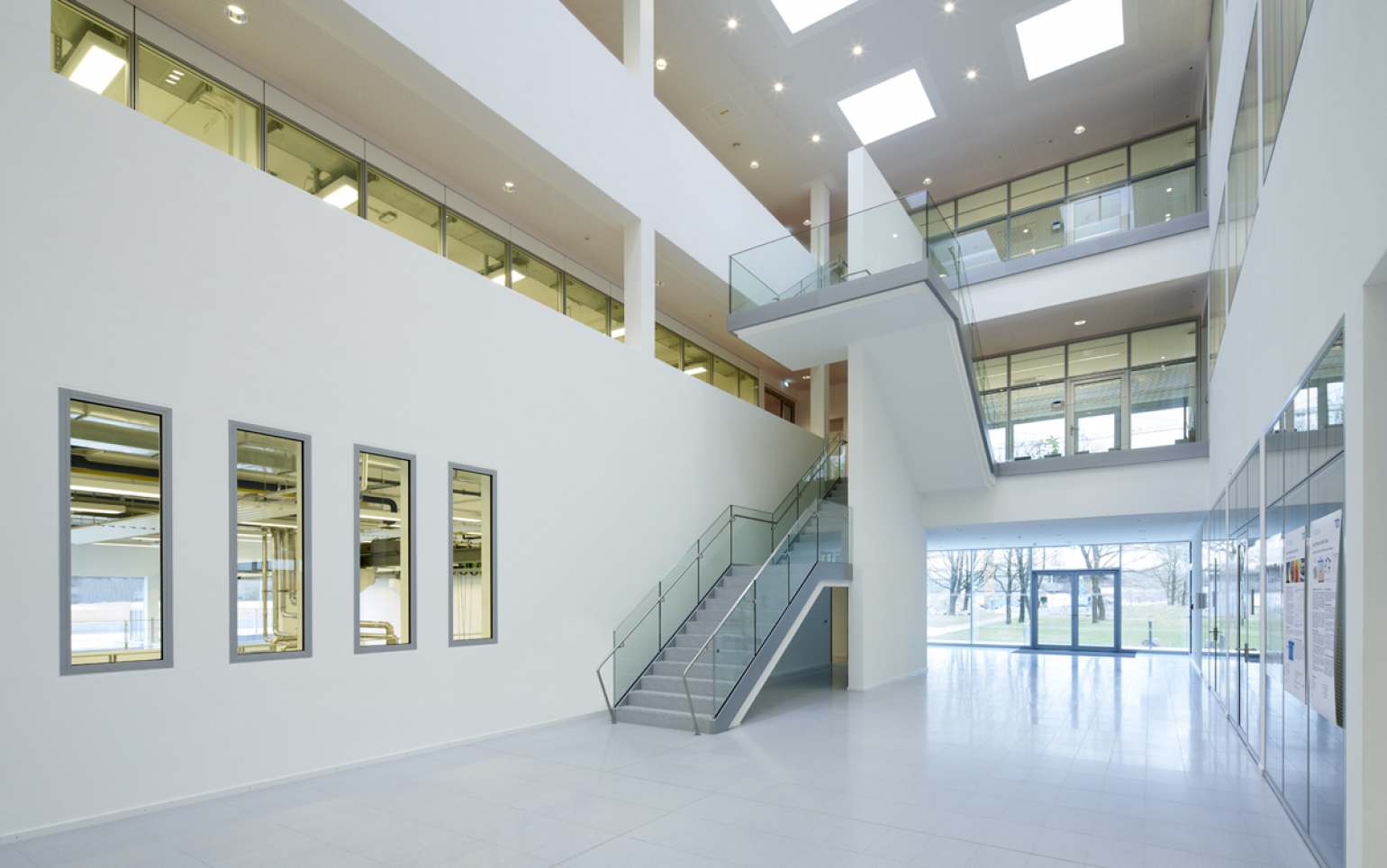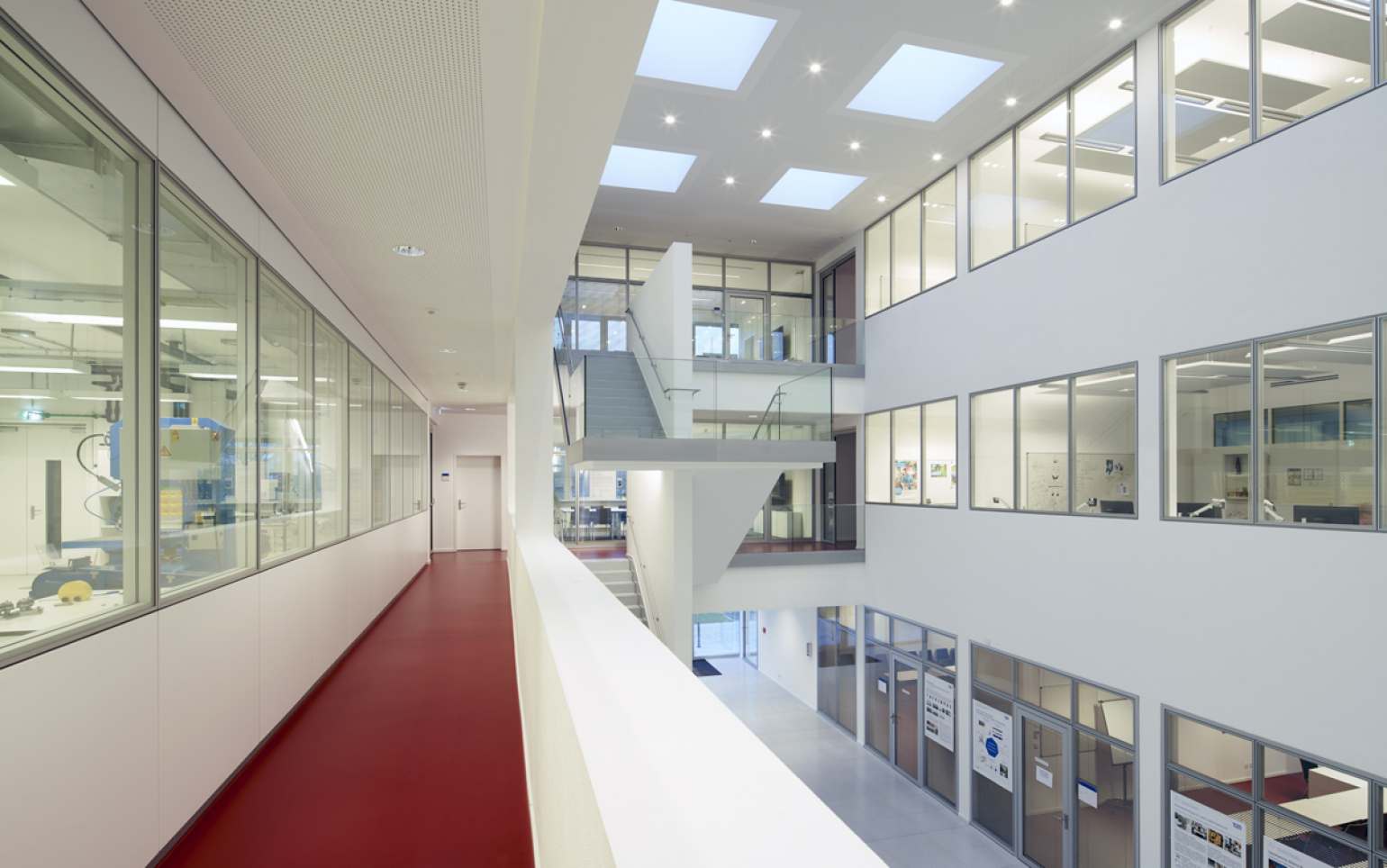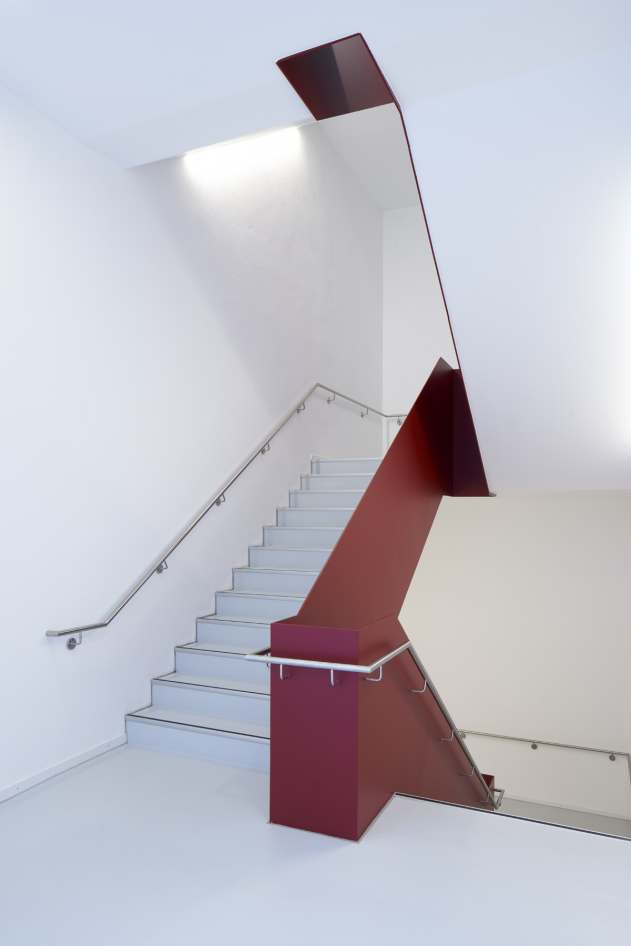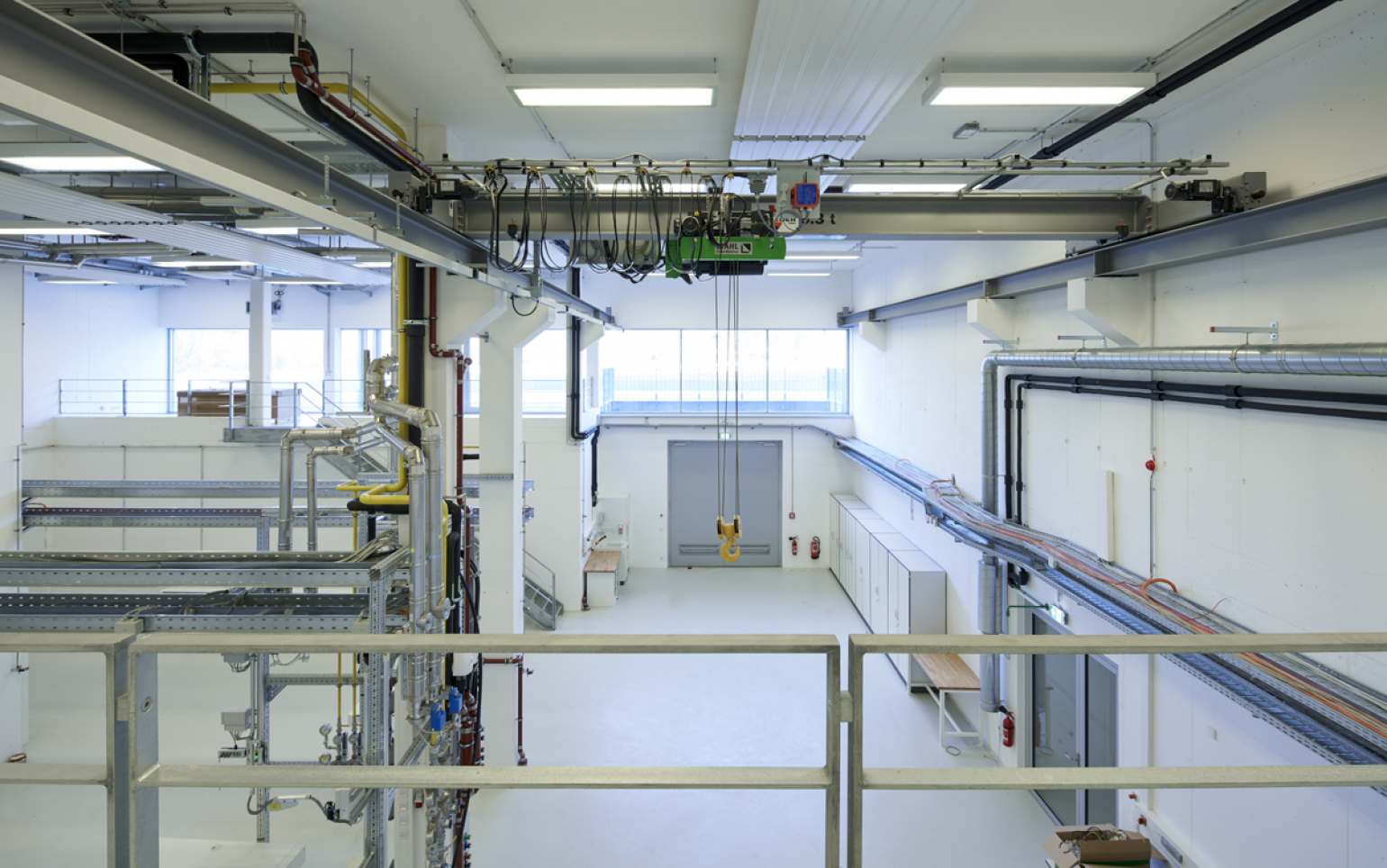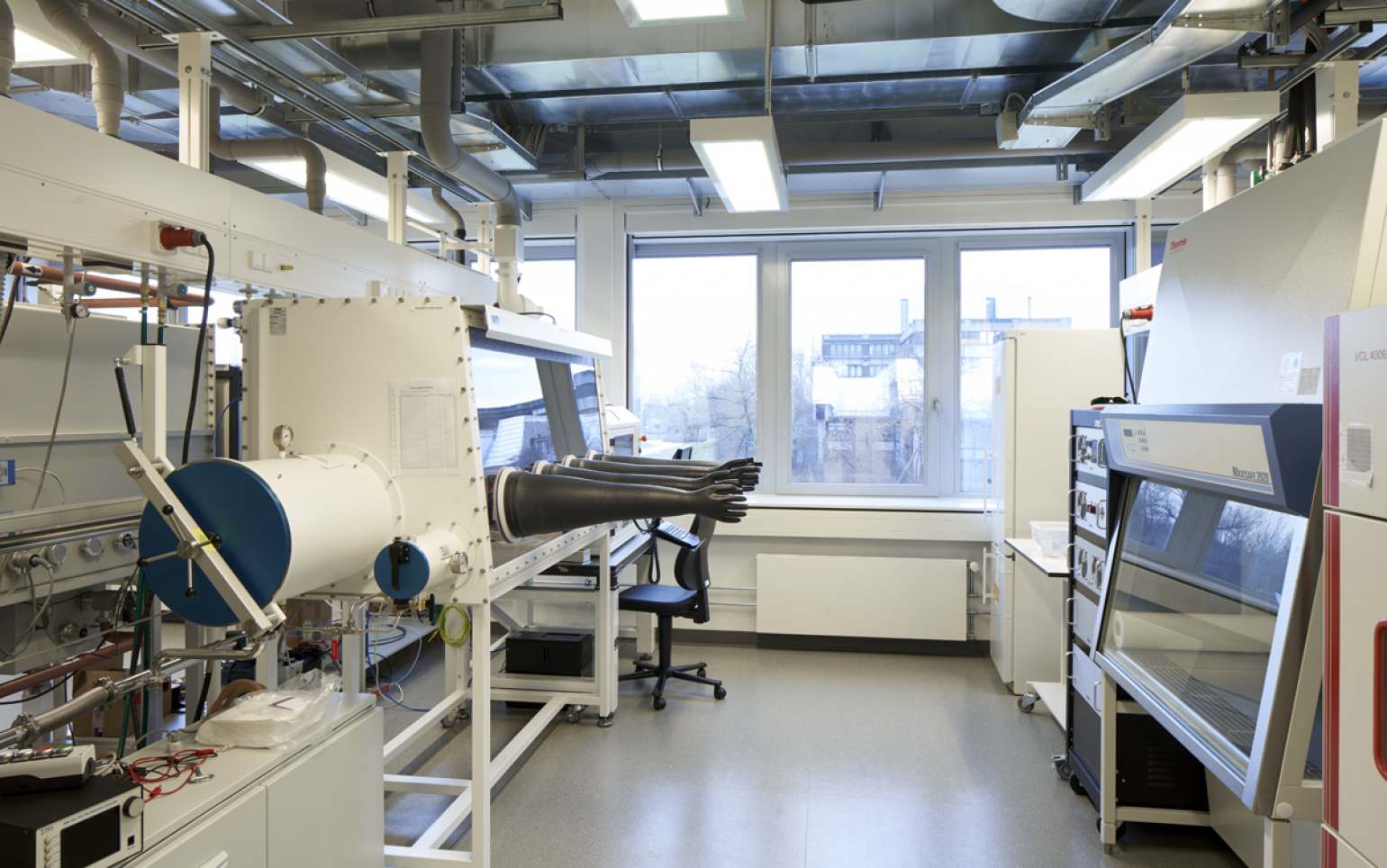Technical University Munich – Center for Energy and Information (TUM-ZEI), Garching
Client
Freistaat Bayern, vertreten durch das Staatliche Bauamt München 2
Negotiated procedere Top rank
2014
Start of Planning - Completion
2014 - 2017
Performance phases
2 - 8
Team
Planning: Barbara Dünstl, Rafael Fernández Caparrós, Site management: Markus Dunau
Building data
Total cost 17,000,000 €
Gross floor area 5,580 m²
The new Center for Energy and Information (ZEI) is one of the first buildings on the northern access road of the Research Campus Garching. The compact three-storey structure with a boldly projecting roof bearing photovoltaic elements is a distinct feature in the heterogeneous environment of higher education buildings. The building is set back from the street to create a small covered reception area – a place of arrival and communication. A recess in the building marks the main entrance of the rectangular structure. The entrance leads to the heart of the institution: an open three-storey space. This forum hall functions as a central area for scientific communication, while also offering insights into the adjoining work areas separated by glazing.
The ZEI is divided into three utilisation areas connected to each other through the three-storey atrium. The southern part of the ground floor contains the central part of the forum space including a large auditorium and two seminar rooms. There is also a sightline into a simulation lab in the north, which extends to the basement across two storeys. Zoning of lab, seminar and office areas continues in the two upper storeys for provision of economically efficient supply and disposal services to the various utilisation areas. The office spaces glazed towards the hall surround the central atrium in a U-shaped arrangement. Labs and workshops accommodated in a compact block packed with installations in the northern part of the building are also glazed.
On the ground floor, the façade of the structure is split into an open transparent area with a floor-to-ceiling stick system construction and closed white façade areas with glass panel elements. The dark metal panel façade of the upper storeys is structured by continuous ribbon windows and contrasting horizontal demarcation lines.

